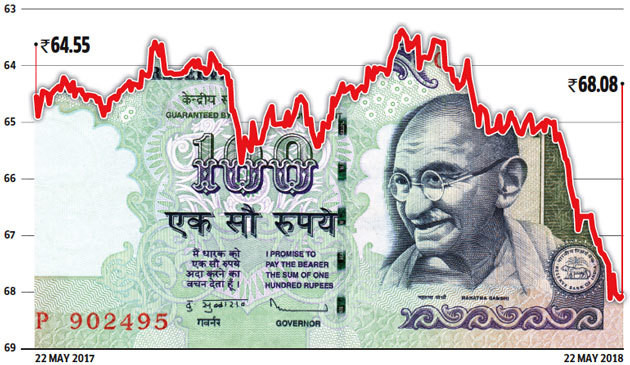The Indian Rupee: Navigating Fluctuations in Global Currency Markets

The Indian rupee faced a slight depreciation of 8 paise against the US dollar in early trade on Wednesday. This decline was influenced by the strength of the American currency in the international markets. However, trader sentiments were bolstered by the domestic equity benchmarks reaching all-time high levels and the continued inflow of foreign funds. These positive factors helped mitigate the downward pressure on the rupee.
The rupee’s performance at the interbank foreign exchange saw it opening at 82.08 and touching 82.12, resulting in an 8-paise decline compared to its previous close. The strength of the US dollar in overseas markets contributed to the rupee’s depreciation.
Despite the initial depreciation, domestic equity benchmarks reaching record levels and the sustained inflow of foreign funds played a vital role in boosting investor sentiments. These factors also helped to limit the rupee’s declining trend.
As the trading day progressed, the rupee’s movements remained subject to fluctuations influenced by various global and domestic economic factors. Investors and traders closely monitored international currency markets, keeping an eye on any developments that could impact the rupee’s performance.
The performance of the Indian rupee against the US dollar holds significant implications for the country’s economy. A weaker rupee can lead to increased costs for imported goods, which may affect overall inflation levels. On the other hand, a stronger rupee can make exports less competitive in the global market, potentially affecting India’s export-led industries.
The global economic landscape plays a crucial role in determining the strength of major currencies, including the US dollar. Economic indicators, geopolitical events, and central bank policies are among the factors that can influence currency movements. For India, being a major player in the global economy, fluctuations in the rupee’s value can have wide-ranging implications.
The sustained inflow of foreign funds into the Indian financial markets is an essential factor in supporting the rupee. Foreign institutional investors (FIIs) play a significant role in driving the inflow of funds into the country. Their investment decisions are influenced by various factors, including India’s economic growth prospects, policy stability, and the overall attractiveness of the Indian market.
The Indian government and monetary authorities keep a close eye on the rupee’s performance and take necessary measures to ensure stability and prevent excessive volatility. Central bank interventions, monetary policy adjustments, and other measures are used to manage currency fluctuations and safeguard the country’s economic interests.
As the trading day progresses, market participants will continue to analyse economic data and global developments that could impact the rupee’s performance. Traders will also assess market sentiment and monitor key support and resistance levels for the currency pair.
While the depreciation of the rupee against the US dollar may be a concern for some, it is essential to keep in mind that currency fluctuations are a normal part of the global financial landscape. Exchange rates are influenced by a multitude of factors, and economies around the world experience currency movements based on market dynamics.
As India continues to navigate its economic path and engage in global trade, the rupee’s value will remain subject to market forces and economic fundamentals. The country’s robust economic growth, policy measures, and investor confidence will play a crucial role in shaping the rupee’s performance in the long run.
News Mania Desk/ Agnibeena Ghosh , 19 July 2023






